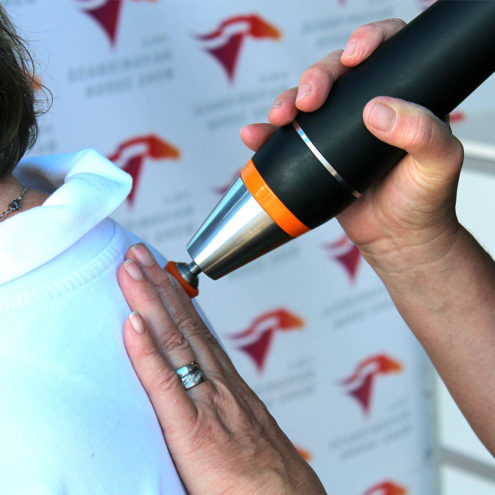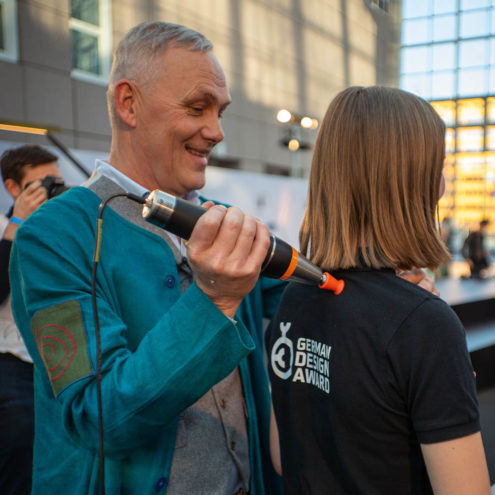Back exercises for strength & stability

Having a strong and stable back is essential for a well-functioning body. The back is involved in almost every movement we make, from sitting and standing to lifting and carrying. By regularly exercising your back muscles, you can improve your posture, reduce the risk of back problems and increase your upper body strength.
Many people suffer from back pain as a result of a sedentary lifestyle or unbalanced exercise. By including effective back exercises in your routine, you can strengthen your back muscles, improve your mobility and prevent injury. In this guide, we review the benefits of back training, basic and advanced exercises, and how Fascia Clinics can help you optimize your back health.
The benefits of exercising your back
Exercising your back regularly provides a range of health benefits, both for your performance and your everyday functioning.
1. improved posture
A strong back helps you maintain good posture, reducing strain on your neck and shoulders.
2. Reduced risk of back pain
A weak back can lead to strain in other parts of the body. By strengthening your back muscles, you can reduce the risk of pain and injury.
3. Increased upper body stability
Back training strengthens the trunk muscles, improving balance and stability throughout the body.
4. Support for other forms of training
Whether you’re lifting weights, running or practicing yoga, a strong back plays a central role in providing support and power in your movements.
Basic back exercises for all levels
Here are some of the best back exercises suitable for both beginners and experienced exercisers:
1. lat pull
Muscles that are activated: Latissimus dorsi, trapezius and biceps
Implementation:
- Sit at a lat pull machine and grip the bar with a wide grip.
- Pull the bar down towards your chest while squeezing your shoulder blades together.
- Slowly drop the bar back to the starting position.
2. Seated rowing
Muscles that are activated: Deep muscles of the back, latissimus dorsi, biceps and trapezius
Implementation:
- Sit at a rowing machine and grip the handle with both hands.
- Pull the handle towards your stomach while keeping your back straight.
- Release the handle in a controlled manner and bend your upper body slightly forward. The lumbar spine should not sway.
3. Deadlift
Muscles that are activated: Lumbar, trapezius, glutes and legs
Implementation:
- Stand with your feet hip-width apart and grasp a barbell. Your spine should be neutral.
- Keep your back straight and lift the bar by extending your hips and knees. Avoid rotating your shoulders forward and looking up.
- Lower the bar back to the ground in a controlled manner with a straight back.
Back training for different goals
1. To build muscle volume
If you want to build a broad and strong back, you should train with heavy weights and fewer repetitions (6-10 reps). Exercises such as deadlifts and lat pulls with heavy loads are effective.
2. To increase resilience
To improve endurance, you can train with lighter weights and more repetitions (12-20 reps). Rowing stretches and back extensions are good options.
3. to improve mobility
If you want to increase mobility, you should focus on dynamic movements and stretching, such as cat-camel and back rotations.
Common mistakes in back training
Wrong technique – Arching or arching your back when lifting can lead to injury.
Weights that are too heavy – If you cannot control the movement, you should lower the weight.
Insufficient activation of the back muscles – Using your arms instead of your back when rowing can reduce the effectiveness of the exercise.
Mobility and stretching for your back
Stretching and mobility exercises help keep your back flexible and reduce the risk of stiffness and injury.
Cat-camel stretch: Stand on all fours and alternate between rounding and arching your back.
Seated back rotation: Sit on the floor, place one leg over the other and turn your upper body to the side.
Injury prevention exercises for the back
To avoid injury, it is important to strengthen the stabilizing muscles of the back. Some good exercises include:
Plank: Strengthens the core muscles and protects the lumbar spine.
Side plank: Improves core strength and reduces oblique strain on the back.
Back stretches: Strengthens the endurance and strength of the lower back.
Tips for building a sustainable back exercise routine
Vary the exercises to work out all parts of your back.
Balance strength and mobility to avoid stiffness.
Exercise regularly – 2-3 sessions a week are optimal for back training.
Listen to your body and avoid exercising through pain.
How Fascia Clinics can help you with back training and muscle health
At Fasciaklinikerna we offer treatments and advice to optimize your back training. Through fascia treatment and individualized exercises we can:
Reduce stiffness and pain in back muscles and fascia.
Improve mobility and reduce tension in the back.
Optimize recovery and prevent injury by loosening restrictions in the fascia
Want a strong and pain-free back? Visit fasciaklinikerna.se fasciaklinikerna.se and book a consultation today!
 Search
Search
































